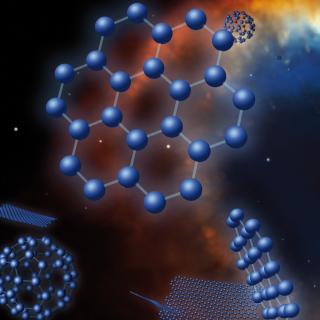Trigo-Rodríguez, J. M.; García-Hernández, D. A.; Lugaro, M.; Karakas, A. I.; van Raai, M.; García Lario, P.; Manchado, A.
Referencia bibliográfica
Meteoritics & Planetary Science, vol. 44, Issue 5, p.627-641
Fecha de publicación:
7
2009
Número de citas
39
Número de citas referidas
35
Descripción
We demonstrate that a massive asymptotic giant branch (AGB) star is a
good candidate as the main source of short-lived radionuclides in the
early solar system. Recent identification of massive (4-8 M?) AGB stars
in the galaxy, which are both lithium- and rubidium-rich, demonstrates
that these stars experience proton captures at the base of the
convective envelope (hot bottom burning), together with high-neutron
density nucleosynthesis with 22Ne as a neutron source in the He shell
and efficient dredge-up of the processed material. A model of a 6.5 M?
star of solar metallicity can simultaneously match the abundances of
26Al, 41Ca, 60Fe, and 107Pd inferred to have been present in the solar
nebula by using a dilution factor of 1 part of AGB material per 300
parts of original solar nebula material, and taking into account a time
interval between injection of the short-lived nuclides and consolidation
of the first meteorites equal to 0.53 Myr. Such a polluting source does
not overproduce 53Mn, as supernova models do, and only marginally
affects isotopic ratios of stable elements. It is usually argued that it
is unlikely that the short-lived radionuclides in the early solar system
came from an AGB star because these stars are rarely found in star
forming regions, however, we think that further interdisciplinary
studies are needed to address the fundamental problem of the birth of
our solar system.
Proyectos relacionados

Nucleosíntesis y procesos moleculares en los últimos estados de la evolución estelar
Las estrellas de masa baja e intermedia (M < 8 masas solares, Ms) representan la mayoría de estrellas en el Cosmos y terminan sus vidas en la Rama Asintótica de las Gigantes (AGB) - justo antes de formar Nebulosas Planetarias (NPs) - cuando experimentan procesos nucleosintéticos y moleculares complejos. Las estrellas AGB son importantes
Domingo Aníbal
García Hernández